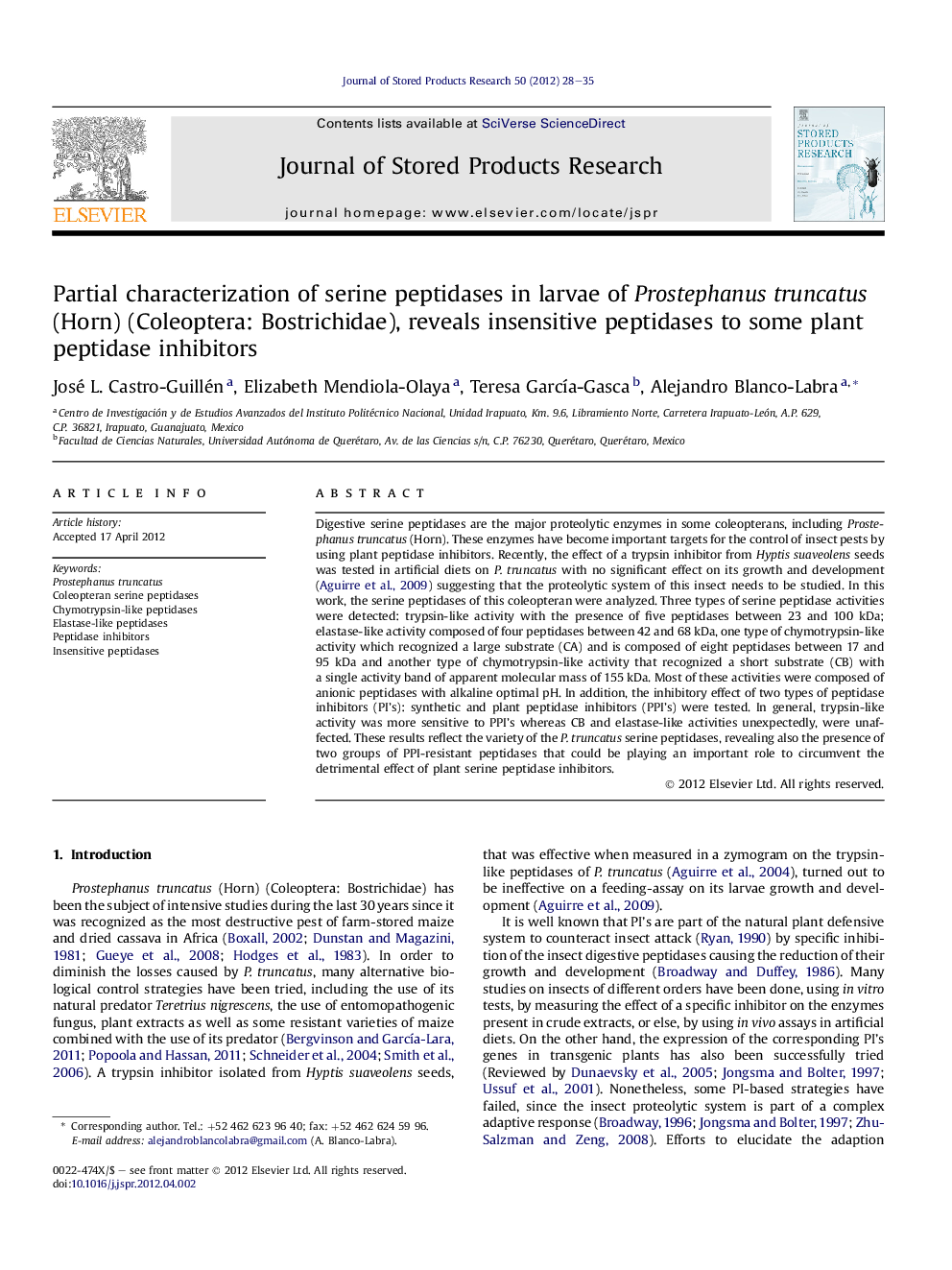| Article ID | Journal | Published Year | Pages | File Type |
|---|---|---|---|---|
| 4517178 | Journal of Stored Products Research | 2012 | 8 Pages |
Digestive serine peptidases are the major proteolytic enzymes in some coleopterans, including Prostephanus truncatus (Horn). These enzymes have become important targets for the control of insect pests by using plant peptidase inhibitors. Recently, the effect of a trypsin inhibitor from Hyptis suaveolens seeds was tested in artificial diets on P. truncatus with no significant effect on its growth and development ( Aguirre et al., 2009) suggesting that the proteolytic system of this insect needs to be studied. In this work, the serine peptidases of this coleopteran were analyzed. Three types of serine peptidase activities were detected: trypsin-like activity with the presence of five peptidases between 23 and 100 kDa; elastase-like activity composed of four peptidases between 42 and 68 kDa, one type of chymotrypsin-like activity which recognized a large substrate (CA) and is composed of eight peptidases between 17 and 95 kDa and another type of chymotrypsin-like activity that recognized a short substrate (CB) with a single activity band of apparent molecular mass of 155 kDa. Most of these activities were composed of anionic peptidases with alkaline optimal pH. In addition, the inhibitory effect of two types of peptidase inhibitors (PI's): synthetic and plant peptidase inhibitors (PPI's) were tested. In general, trypsin-like activity was more sensitive to PPI's whereas CB and elastase-like activities unexpectedly, were unaffected. These results reflect the variety of the P. truncatus serine peptidases, revealing also the presence of two groups of PPI-resistant peptidases that could be playing an important role to circumvent the detrimental effect of plant serine peptidase inhibitors.
Graphical abstractFigure optionsDownload full-size imageDownload as PowerPoint slideHighlights► Four groups of serine peptidases were found in the larvae of Prostephanus truncatus. ► Most of those activities were anionic with alkaline optimal pH, and had molecular masses between 17 and 155 kDa. ► Elastase and high-molecular mass chymotrypsin-like activities were insensitive to the plant peptidase inhibitors used. ► Insensitive peptidases of P. truncatus could play a role by circumventing the effect of peptidase inhibitors.
